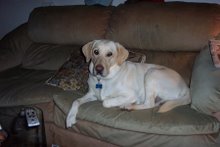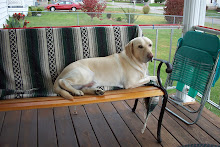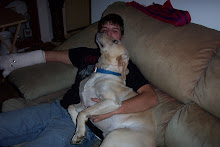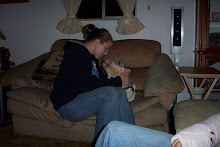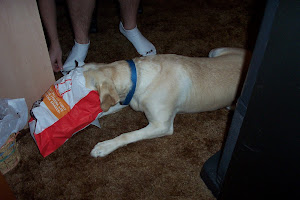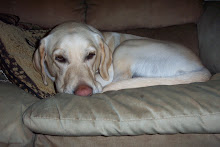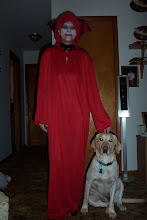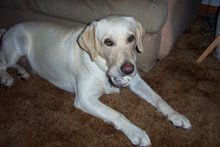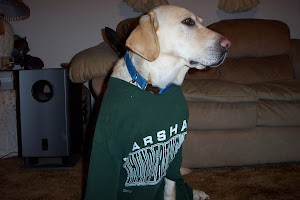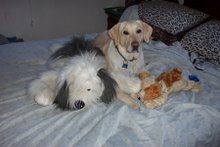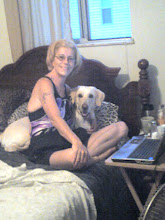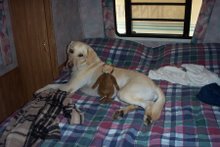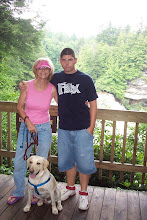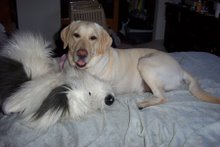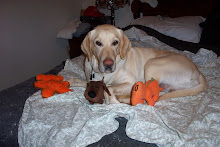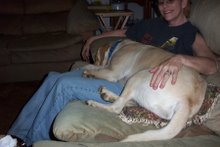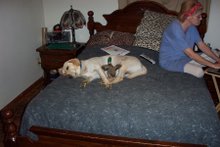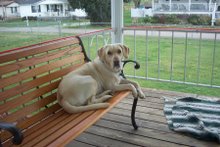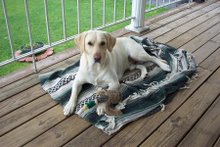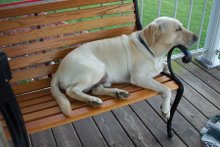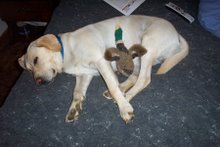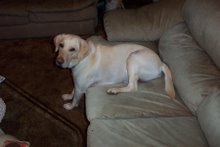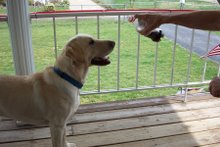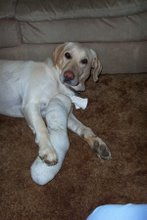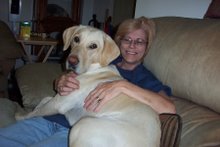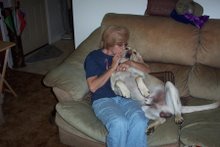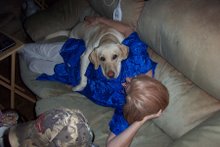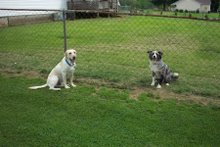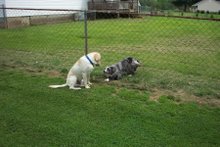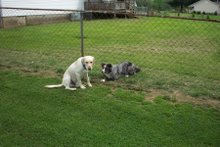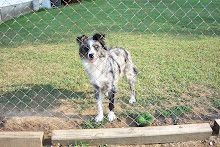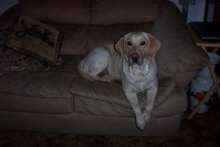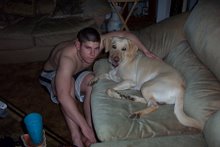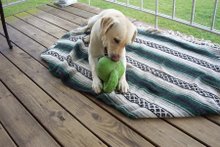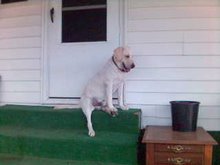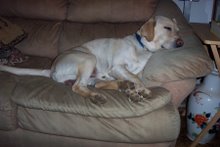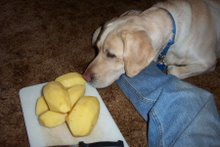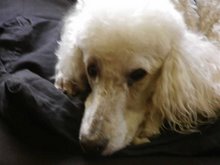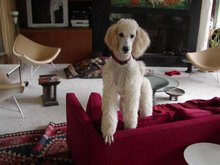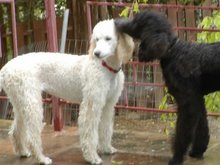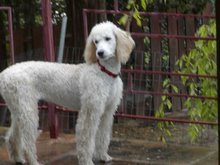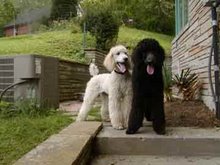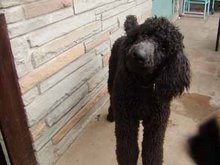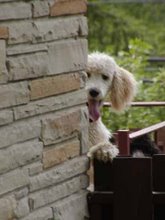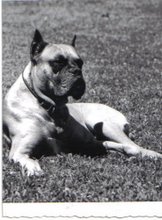Kallee and Tamara
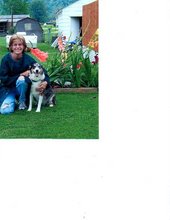
A Beautiful Summer Day.
Madam Kallee, CTD, CGC - 1994-2005 - Certified Therapy Dog and a Canine Good Citizen
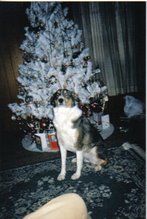
I am so pretty!
Kallee, T.D.I., CGC - Certified Therapy Dog and a Canine Good Citizen - 1994-2005

I loved to pose for the camera.
Hat Girl.
The things I do for my mom!
Happiness.
Bubby knows how to scratch a tummy.
Best of Friends.
Mine! No, Mine!, No Mine!!!
Whew !
Bubby wears me out!
This is the Life.
Just relaxing with bubby.
Kallee and Mr. Monkey
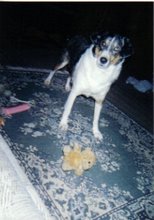
See Mr. Monkey? Wanna play?
Miss Cool.
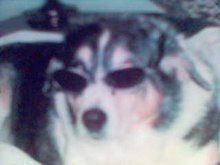
I loved to wear my shades.
Tuesday, September 25, 2007
How long should your dog-training sessions be?
There are many different factors that come into play when determining how long your dog training sessions should be. Just as people have many and varied personalities, the same is true for dogs - even within a breed. Many people recommend that you do a personality analysis before getting your dog to determine which breed will be most suitable in your life. Very often, however, we choose dogs based on other different factors at the time. The various different breeds of dogs have different personality traits and you need to work with these when training your dog to get the best results. The age of the dog also determines the ability to be trained. While young puppies generally have a shorter attention span they haven't learned the bad habits of older dogs and in most cases are easiest to train. When training young puppies it is a good idea to have shorter training sessions, and to end the training sessions with a bit of fun and playtime. When you mix a little fun with the training, you always get better results, and you will also be more likely to continue with the dog training for longer. As an owner and their dog progress along with training, both parties will find it far more enjoyable as the results will improve and the obvious rewards that both the dog and the owner receive from one another will bond the relationship even further. There's nothing quite like dog training to start off a lifetime relationship in the best manner possible. Dog training is the best investment you can ever make for your pet.
Sunday, September 16, 2007
Pack Mentality
The natural pack behavior is perhaps the most important reason why it has so successfully integrated itself into human communities worldwide. The sophistication of pack behavior varies considerably within the canine family. Foxes, for example, after leaving their mothers, have little inclination to behave socially with other foxes. Wolves, on the other hand, remain gregariously sociable throughout their lives. This results in the pack - a group of genetically related individuals who work together with a common cause. They hunt together, share food, keep each other warm, all of which involve communicating in a variety of ways. The domestic dog experiences a few months of natural pack activity from birth until it leaves its litter and joins a human pack, of which it will become a member. In the litter, each puppy learns how to behave with its litter mates and its mother. The mother is the leader because she controls food, warmth, and security. Beginning at about three(3)weeks of age, puppies start to play with each other. Play offers the satisfaction of physical contact with other puppies, while at the same time providing learning experience for muscle control. Equally important, it teaches the puppies how to behave with other dogs. Play remains a lifelong activity among pack members.
The Human Pack:
People discovered over 10,000 yrs. ago that the dog's mind is most malleable and impressionable in the first 3-4 months of its life. When a puppy is taken from the litter at between 8 and 12 weeks of age, and homed with people, it naturally transfers its innate pack mentality to the to this distinctly different species. Because they control food, warmth comfort, and security, people are seen as pack leaders. The puppy naturally begs for food. It jumps up to lick a human face just as it would jump up to lick its mother's face, a behavior that in wolves and some dogs stimulates the mother to regurgitate a partly digested meal for her puppies. As the puppy matures, it continues to treat its human pack as an acceptable substitute for the canine pack it has left. In play with people, nipping them as it would nip its litter mates or its mother. In a natural pack, if a puppy nips too hard it is reprimanded, either by a squeal and a reluctance to play further by a litter mate, or by a controlled bite from its mother - a bite not meant to damage the puppy but to sufficiently intense to teach it not to play quite so vigorously. By these means, the puppy learns how to behave with other members of the pack.
Status with the Pack:
As a puppy matures into adulthood, its pack behavior evolves, eventually to be influenced both by cumulative experience and by the onset, at puberty, of sex hormone production. It is also influenced by selective breeding. Certain breeds have been intentionally bred to work together as packs, with as little internal conflict as possible. Pack hounds follow scent trails together, eat communally from a large feeding troughs, and look upon the human pack master as their leader. Within typical human households, the adult dog's pack instinct drives it to find a suitable niche in the family. Although sexual maturity arrives early in life, usually at between six and twelve months of age, emotional maturity is not complete until a year later, the time of emotional maturity in wolves. A dominant dog, particularly if it is a male, can challenge its designated position in the human pack at any time between sexual and emotional maturity. It does so by refusing to follow instructions given by another pack member or by intentionally challenging someone. The dog usually chooses what it considers to be the weakest member of the pack. It might, for example, bite a child over possession of a toy, or refuse to obey a command given by the child's mother, but still obey the same command given by the deeper voiced, more assertive sounding father. The dog's position in the pack is not always static. Especially while young and robust, it may challenge in an attempt to move closer to pack leadership.
The Territorial Instinct:
All members of a pack are equally responsible for the security of their territory. This is, of course, one of the earliest reasons why our ancestors permitted wolves to live near and then in their campsites. When canine and human family groups share territory, they warn each other of potential dangers. After companionship, security is the most common reason of dog ownership. The dog's territorial instincts have their origins in pack activity. Almost every dog becomes alert and inquisitive when it hears, sees, or smells something different. Most dogs will alert other members of the pack by barking, sometimes aggressively, but just as often simply to alert the rest of the pack that someone or something is approaching their communal space. Some members of the pack actively defend that communal space, while most prefer to leave this to the initiative of the pack leader. As well as communal space, each pack member has its own personal space within the territory. This often a bed provided for the dog, but some individuals choose their own space - a chair, sofa, or space from incursions by other pack members, including themselves.
Going Solo:
In parts of Central and South America, Eastern Europe, Asia, and Africa, pariah dogs(outcast), breed, feed, and travel together as independent packs. However, in North America, northern Europe, Japan, Australia, and New Zealand, few dogs form packs wit other dogs. Free-ranging dogs(owned by people but allowed to roam freely) never form social packs, and only congregate when they are following an estrus female. No scientific observation of groups of free-ranging dogs has shown any indication of territorial pack behavior, probably because there is no need for these dogs to defend either a source of food or themselves. Free-ranging dogs in groups are not cohesive units, as are wolf packs, or even a single human hunter and his canine companion. They are simply individuals with irresponsible human pack leaders.
The Human Pack:
People discovered over 10,000 yrs. ago that the dog's mind is most malleable and impressionable in the first 3-4 months of its life. When a puppy is taken from the litter at between 8 and 12 weeks of age, and homed with people, it naturally transfers its innate pack mentality to the to this distinctly different species. Because they control food, warmth comfort, and security, people are seen as pack leaders. The puppy naturally begs for food. It jumps up to lick a human face just as it would jump up to lick its mother's face, a behavior that in wolves and some dogs stimulates the mother to regurgitate a partly digested meal for her puppies. As the puppy matures, it continues to treat its human pack as an acceptable substitute for the canine pack it has left. In play with people, nipping them as it would nip its litter mates or its mother. In a natural pack, if a puppy nips too hard it is reprimanded, either by a squeal and a reluctance to play further by a litter mate, or by a controlled bite from its mother - a bite not meant to damage the puppy but to sufficiently intense to teach it not to play quite so vigorously. By these means, the puppy learns how to behave with other members of the pack.
Status with the Pack:
As a puppy matures into adulthood, its pack behavior evolves, eventually to be influenced both by cumulative experience and by the onset, at puberty, of sex hormone production. It is also influenced by selective breeding. Certain breeds have been intentionally bred to work together as packs, with as little internal conflict as possible. Pack hounds follow scent trails together, eat communally from a large feeding troughs, and look upon the human pack master as their leader. Within typical human households, the adult dog's pack instinct drives it to find a suitable niche in the family. Although sexual maturity arrives early in life, usually at between six and twelve months of age, emotional maturity is not complete until a year later, the time of emotional maturity in wolves. A dominant dog, particularly if it is a male, can challenge its designated position in the human pack at any time between sexual and emotional maturity. It does so by refusing to follow instructions given by another pack member or by intentionally challenging someone. The dog usually chooses what it considers to be the weakest member of the pack. It might, for example, bite a child over possession of a toy, or refuse to obey a command given by the child's mother, but still obey the same command given by the deeper voiced, more assertive sounding father. The dog's position in the pack is not always static. Especially while young and robust, it may challenge in an attempt to move closer to pack leadership.
The Territorial Instinct:
All members of a pack are equally responsible for the security of their territory. This is, of course, one of the earliest reasons why our ancestors permitted wolves to live near and then in their campsites. When canine and human family groups share territory, they warn each other of potential dangers. After companionship, security is the most common reason of dog ownership. The dog's territorial instincts have their origins in pack activity. Almost every dog becomes alert and inquisitive when it hears, sees, or smells something different. Most dogs will alert other members of the pack by barking, sometimes aggressively, but just as often simply to alert the rest of the pack that someone or something is approaching their communal space. Some members of the pack actively defend that communal space, while most prefer to leave this to the initiative of the pack leader. As well as communal space, each pack member has its own personal space within the territory. This often a bed provided for the dog, but some individuals choose their own space - a chair, sofa, or space from incursions by other pack members, including themselves.
Going Solo:
In parts of Central and South America, Eastern Europe, Asia, and Africa, pariah dogs(outcast), breed, feed, and travel together as independent packs. However, in North America, northern Europe, Japan, Australia, and New Zealand, few dogs form packs wit other dogs. Free-ranging dogs(owned by people but allowed to roam freely) never form social packs, and only congregate when they are following an estrus female. No scientific observation of groups of free-ranging dogs has shown any indication of territorial pack behavior, probably because there is no need for these dogs to defend either a source of food or themselves. Free-ranging dogs in groups are not cohesive units, as are wolf packs, or even a single human hunter and his canine companion. They are simply individuals with irresponsible human pack leaders.
Tuesday, September 11, 2007
Reward Training
Reward training your dog.
Reward training is quite possibly one of the oldest methods of training dogs, dating back to the days when people started trying to domesticate wild animals. It is probably the method of dog training that most of us are familiar with, and it is a natural instinct to reward the dog when they perform the task that we have asked of them. Some people prefer to use a combination of the reward training methods and the leash and collar training to get the best out of their dog in the least time. Some dogs respond better to reward training than leash and collar training so your decision might depend on what method you see working the best with your dog. Reward training for dogs, has seen a remarkable increase in popularity over recent years with many people finding this as their preferred method of training their new puppies. There is no definitive answer as to what the best type of dog training is, as some dogs respond better to one technique than others. There are certainly some advanced techniques that are taught in the top dog training manuals that will ensure you train your dog, faster and easier than trying to do so on your own. Most dogs will respond to some extent, to either method of training, and any training is certainly better than none, even if you only teach your dog the most basic commands. Reward training is even used for dogs that work in the military and police. Those dogs that are used for scent detection and tracking are also often trained using some form of reward training. Generally, reward training is in the form of some type of food reward.
Reward training is quite possibly one of the oldest methods of training dogs, dating back to the days when people started trying to domesticate wild animals. It is probably the method of dog training that most of us are familiar with, and it is a natural instinct to reward the dog when they perform the task that we have asked of them. Some people prefer to use a combination of the reward training methods and the leash and collar training to get the best out of their dog in the least time. Some dogs respond better to reward training than leash and collar training so your decision might depend on what method you see working the best with your dog. Reward training for dogs, has seen a remarkable increase in popularity over recent years with many people finding this as their preferred method of training their new puppies. There is no definitive answer as to what the best type of dog training is, as some dogs respond better to one technique than others. There are certainly some advanced techniques that are taught in the top dog training manuals that will ensure you train your dog, faster and easier than trying to do so on your own. Most dogs will respond to some extent, to either method of training, and any training is certainly better than none, even if you only teach your dog the most basic commands. Reward training is even used for dogs that work in the military and police. Those dogs that are used for scent detection and tracking are also often trained using some form of reward training. Generally, reward training is in the form of some type of food reward.
Tuesday, September 4, 2007
Separation Anxiety.
Many people are unaware that separation anxiety even exists with their dog. There are many different traits that can be seen in a dog due to separation anxiety. When we leave home for work each day, most people are unaware of what their dog is experiencing, and for many of them it is separation anxiety. We assume that because the dog appears to be happy when we arrive home at the end of the day, that it has been happy all day long. In many instances, the dog could have had quite a traumatic day. Many dogs are concerned that when their owner leaves, they might not be coming back. They have no way of knowing that we will be back in eight or nine hours. The stress that this causes for a dog can lead to destructive behavior where they will chew everything in sight. Other dogs might express their stress by soiling the house. Either way, if you come home from work and find that your well-trained dog has done something out of the ordinary you need to consider whether it has had a stressful day or not, and certainly not reprimand it until you know what the circumstances have been. If you sense your dog has been stressed during the day, you might like to consider giving it more toys to stop it from becoming bored, or better still, have somebody call in and visit at some stage throughout the day so it knows that it is not alone. Exercising your dog in the morning before you leave is a good idea because it is more likely to sleep during the day. Another method to reassure your dog that you will be coming back when you leave, is to do several smaller trips in the course of a few days or weeks, where the dog becomes more and more accustomed to you leaving and returning at different intervals. By slowly extending these hours of separation, your dog will become accustomed to it, thereby eliminating separation anxiety.
Subscribe to:
Posts (Atom)
